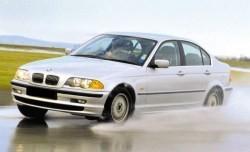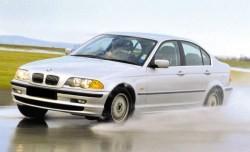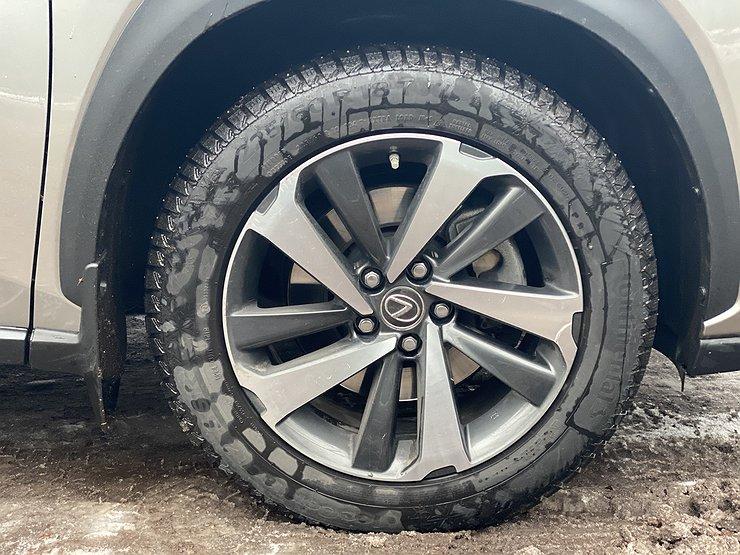
ABC bus
 Mid-April is the time for the forgetful to change winter tires for summer tires.
Mid-April is the time for the forgetful to change winter tires for summer tires.
Jump to: Tire marking | Factors affecting tread wear
By the way, it's worth taking a look at the condition of the tires and possibly making a decision to buy new summer tires. Moreover, at the beginning of the season, buyers are waiting for promotions and new items.

Two important features distinguish summer tires from winter tires. The first is the tread, the second is the rubber compound. The tread of a winter tire is designed so that it sticks to the ground when driving on snow. So there are a lot of all kinds of transverse cutouts and lamellas on it. In the case of a summer tire, cuts are most often longitudinal. They are used to keep the direction of travel. Therefore, on any summer tire, we can easily notice two, and sometimes three deep grooves along the entire tire.
Asymmetrical tread
This year, asymmetric treads are in fashion. Most of the newly introduced tires have just such a tread. Its inner part is designed so that when driving in a curve (under the action of centrifugal force, the tires work on the inside of the tire) it keeps the car well on the road. In turn, the outer part of the tread is responsible for the direction of movement of the tire in a straight line.
However, the protector is not everything.
What kind of rubber?
The whole secret of good tire grip lies in the rubber compound from which the tire is made. In the case of summer tires, this material is chosen to remain flexible at low temperatures. Unfortunately, under the influence of positive temperatures, the tire becomes even softer and simply wears out very quickly.
“At a temperature of 20 degrees, a few sharp braking is enough for the tire to completely wear out,” explain the mechanics of tire shops. This temperature limit is 7 degrees C. If it is less, it is worth using winter tires, if the temperature has been above 7 degrees C for a week, it is necessary to replace the tires.
To the top of the article
Checking the condition of the tire
When replacing a winter tire with a summer one, you need to carefully look at what condition it is in after the winter. You may already need to purchase a new set of tires. First, we check if there are cracks in the tread on the tire and if there are blisters on the side of the tire after inflation, which means that the cord is leaky. The second test is to check the thickness of the tread. New tires have a tread depth of 8-9 mm. The rules of the road allow driving on tires with a tread greater than 1,6 mm. However, Polish law is not very demanding in this respect. In Western Europe, the replacement tire is rubber with a tread depth of 3-4 mm. Tests have confirmed the effect of tread thickness on braking distances. When braking from 100 km/h to 60 km/h. in the wet, a 5 mm tread tire performs this maneuver on a 54 m road. For a 2 mm tread tire, the speed reduction will not occur until 70 m.
When installing tires on wheels, it is worth checking the thickness of the tread, not only to make sure the tire needs to be replaced. The measurement will help us determine which wheel to put a particular tire on. As a rule, tires with the deepest tread pattern are installed on the drive axle. It wears out faster. – Every 20 km or after each season, rotation should be used. Therefore, move the front wheels to the rear, and the rear wheels to the front. Always balance the tire when installing it. Thanks to this, the suspension of our car will last longer. Each underweight within 10 g gives a speed of 150 km / h. a force of about 4 kg acts on the axle of the car with each revolution of the wheel. After wintering tires in the basement or in the attic, losses can be up to 30 g. In this case, after a few months, it may turn out that, for example, replacement of the ends of the rods is required. Balancing itself is not expensive. Together with the wheel assembly, it costs about PLN 15 per tyre.
With proper use, the tire should withstand approximately 50 thousand. km. However, in the case of tires with a high speed index, the service life of the rubber is reduced to 30-20 km. These tires are made from soft materials for better grip on the ground. However, they wear out faster. Therefore, in the middle of the summer season, tires should be moved from the front axle to the rear. Otherwise, after driving XNUMX thousand km, it may turn out that we no longer have a tread on the front.

Bus marking
1. Tire size information, for example: 205/55R15, that is:
205 - tire width mm,
R - internal design code (R - radial),
55 is a profile indicator, i.e. what percentage of the width of the tire is the sidewall height,
15 - mounting diameter in inches
2. “TUBELESS” sign – tubeless tire (Most tires are tubeless these days, but in the case of a tubular tyre, it would be TUBE TYPE)
3. The code load capacity of the tire and its permissible speed, for example: 88B: 88 - indicates the load capacity that should be calculated according to a special table, in the case of marking 88, this is the load capacity of 560 kg, B - the maximum speed is 240 km / h.
4. TWI - the inscription at the top, closer to the front of the tire, indicating the location of the tread wear indicator. According to the decree of the Minister of Transport and Maritime Economy, the value of this indicator is at least 1,6 mm.
5. Production date (the next week of the year is the first two digits and the year of production is the last digit), for example, 309 means that the tire was manufactured in the 30th week of 1999.
Factors affecting tread wear
Temperature and humidity
High temperatures soften the tread rubber, which causes the tire to deform more. Therefore, on hot days, it is worth parking the car in the shade or using special tires.
Speed
By driving at high speed, we heat up the tire, which becomes more flexible under the influence of heat, and thus the tread wears out faster.
Internal pressure
If the pressure is too low, the tire constantly expands and contracts (at the point of contact with the road). Thus, heat begins to be released, which heats the rubber. Therefore, it is better to inflate the tire more strongly. Too much tire pressure is not as bad as too little.
Type of road
Fast turns, acceleration and braking, driving on mountain roads and gravel surfaces have a negative impact on our tires.
To the top of the article
